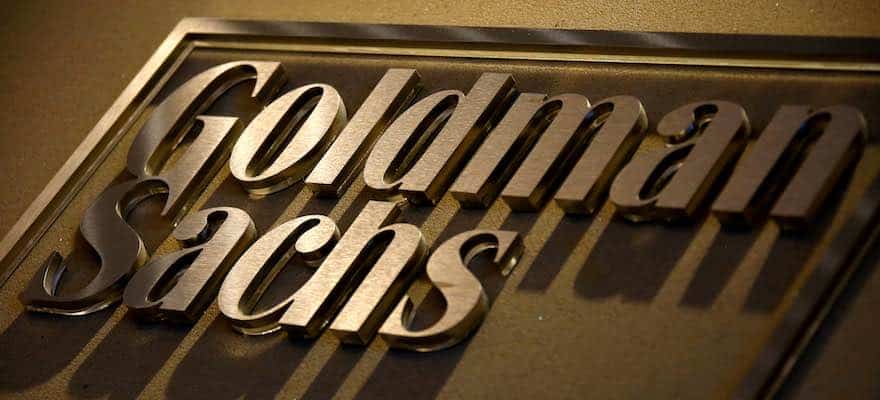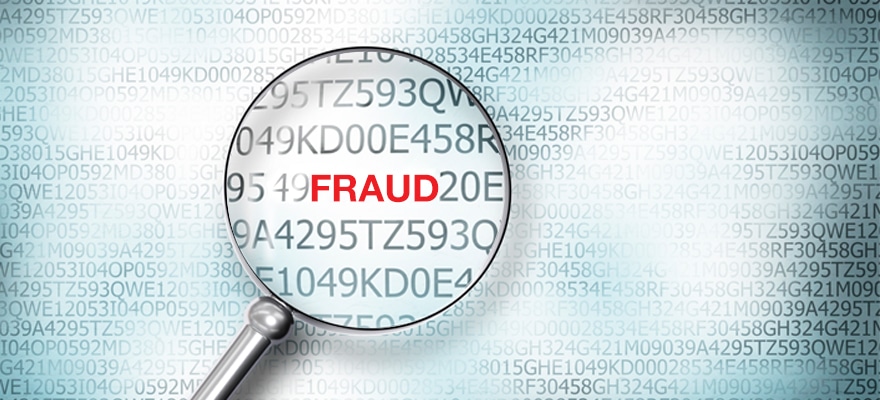Craig Wright, the Australian computer scientist who claims to be the inventor of bitcoin, faced a fresh accusation emerging against him of having produced fabricated documents in court in order to prove his innocence.
Jonathan Warren, a software developer of bitcoin-like email system Bitmessage, testified in a pre-trial examination for the Southern District of Florida court on July 24 as part of the Kleiman v. Wright case. The reason for his appearance was a series of contracts and emails that were sent through the Bitmessage platform.
The lawsuit claims that Wright schemed to steal his business partner’s bitcoins and the intellectual property rights associated with cryptocurrency technology. In addition, he forged and backdated a series of contracts that purported to transfer Kleinman’s assets to his companies.
While the presented deed of trust document is ostensibly dated October 2012, and Wright’s correspondences were allegedly sent on November 6 and 13, 2012, the Bitmessage owner said that the communications protocol wasn’t available before November 19. This chronological discrepancy, in a way, establishes the fact that Wright has likely forged these messages and provided fabricated court documents to prove a trust deed with his plaintiffs.
An excerpt from Warren’s testimony reads:
Question: Prior to November 19, 2012, did you ever share the Bitmessage software or source code with anyone?
Warren: No.
Question: Were there ever any beta testers of the Bitmessage software prior to its release on November 19, 2012?
Warren: No.
Question: Prior to November 19, 2012, where was the Bitmessage source code software located?
Warren: It was located on my personal computer at home and also my work computer.
Question: Would it have been possible for anyone besides you to run Bitmessage prior to November 19, 2012?
Warren: No.
Question: Would it have been possible for anyone besides you to have sent a Bitmessage prior to November 19, 2012?
Warren: No.
Question: Would it have been possible for anyone other than you to have received a Bitmessage prior to November 19, 2012?
Warren: No.
Question: If I were to show you a printout of a Bitmessage that wasn't sent by you but was purportedly sent prior to November 19, 2012, would that message then necessarily been forged?
Warren: Yes.
The Bitmessage developer added that if a mail is sent via an ISP or a web-based mail service, the date and time will usually be correct. However, if the sender is running a mail server, then he probably can backdate an email, perhaps by setting his PC's clock to an earlier date.
This isn’t the first time that the self-styled Satoshi Nakamoto
Satoshi Nakamoto
“Satoshi Nakamoto” is the alias of the mysterious person (or group of people) that are responsible for the creation and launch of Bitcoin back in 2009 and the authorship of the Bitcoin whitepaper, published in 2008. As such, Satoshi Nakamoto is also the entity who conceptualized and created the first-ever blockchain network. Nakamoto was the first to effectively solve the double-spending problem for digital currency using a Peer-to-Peer (P2P) network. Nakamoto was active in the development of bi
“Satoshi Nakamoto” is the alias of the mysterious person (or group of people) that are responsible for the creation and launch of Bitcoin back in 2009 and the authorship of the Bitcoin whitepaper, published in 2008. As such, Satoshi Nakamoto is also the entity who conceptualized and created the first-ever blockchain network. Nakamoto was the first to effectively solve the double-spending problem for digital currency using a Peer-to-Peer (P2P) network. Nakamoto was active in the development of bi
Read this Term fails to prove his case by presenting court documents that appear to be fake. For instance, plaintiffs’ counsel suggested that computer scientist had forged a number of emails supposedly dating to 2011 and 2012, as the messages bore "metadata” placing them far more recently. Additionally, a font copyrighted in 2015 appeared on an email message that Wright claimed to have sent in 2011.
Background
The estate of Wright’s late business partner, David Kleiman, filed a lawsuit over claims that Wright misappropriated a potentially 10-billion dollar fortune. Kleiman died in 2013 after having been confined to a wheelchair for years following a motorcycle accident in 1995.
The allegations concern the ownership of between 550,000 and 1.1 million bitcoins, as well as the intellectual property rights of various Blockchain
Blockchain
Blockchain comprises a digital network of blocks with a comprehensive ledger of transactions made in a cryptocurrency such as Bitcoin or other altcoins.One of the signature features of blockchain is that it is maintained across more than one computer. The ledger can be public or private (permissioned). In this sense, blockchain is immune to the manipulation of data, making it not only open but verifiable. Because a blockchain is stored across a network of computers, it is very difficult to tamp
Blockchain comprises a digital network of blocks with a comprehensive ledger of transactions made in a cryptocurrency such as Bitcoin or other altcoins.One of the signature features of blockchain is that it is maintained across more than one computer. The ledger can be public or private (permissioned). In this sense, blockchain is immune to the manipulation of data, making it not only open but verifiable. Because a blockchain is stored across a network of computers, it is very difficult to tamp
Read this Term technologies.
Kleiman was an IT expert in Pam Beach, Florida, who had much expertise in computer forensics and security. The relationship with Wright, which remained mostly hidden, was born out of a mutual obsession with cryptography and data security, the court papers say.
In 2015, leaked emails from Wright to Kleiman showed they had been discussing a new form of electronic money, months before the launch Nakomoto’s whitepaper about Bitcoin in January 2009.
Shortly after his death, according to the filling, Wright made contact with Kleinman’s brother to inform him that they had been working on a project together and that Kleiman had mined enormous amounts of bitcoins, and requested to check his old computers for wallet files.
This might have given Wright access to information that only Satoshi could have known, which in turn have been used when Wright once tried to offer proof that he is the real Satoshi Nakamoto
Craig Wright, the Australian computer scientist who claims to be the inventor of bitcoin, faced a fresh accusation emerging against him of having produced fabricated documents in court in order to prove his innocence.
Jonathan Warren, a software developer of bitcoin-like email system Bitmessage, testified in a pre-trial examination for the Southern District of Florida court on July 24 as part of the Kleiman v. Wright case. The reason for his appearance was a series of contracts and emails that were sent through the Bitmessage platform.
The lawsuit claims that Wright schemed to steal his business partner’s bitcoins and the intellectual property rights associated with cryptocurrency technology. In addition, he forged and backdated a series of contracts that purported to transfer Kleinman’s assets to his companies.
While the presented deed of trust document is ostensibly dated October 2012, and Wright’s correspondences were allegedly sent on November 6 and 13, 2012, the Bitmessage owner said that the communications protocol wasn’t available before November 19. This chronological discrepancy, in a way, establishes the fact that Wright has likely forged these messages and provided fabricated court documents to prove a trust deed with his plaintiffs.
An excerpt from Warren’s testimony reads:
Question: Prior to November 19, 2012, did you ever share the Bitmessage software or source code with anyone?
Warren: No.
Question: Were there ever any beta testers of the Bitmessage software prior to its release on November 19, 2012?
Warren: No.
Question: Prior to November 19, 2012, where was the Bitmessage source code software located?
Warren: It was located on my personal computer at home and also my work computer.
Question: Would it have been possible for anyone besides you to run Bitmessage prior to November 19, 2012?
Warren: No.
Question: Would it have been possible for anyone besides you to have sent a Bitmessage prior to November 19, 2012?
Warren: No.
Question: Would it have been possible for anyone other than you to have received a Bitmessage prior to November 19, 2012?
Warren: No.
Question: If I were to show you a printout of a Bitmessage that wasn't sent by you but was purportedly sent prior to November 19, 2012, would that message then necessarily been forged?
Warren: Yes.
The Bitmessage developer added that if a mail is sent via an ISP or a web-based mail service, the date and time will usually be correct. However, if the sender is running a mail server, then he probably can backdate an email, perhaps by setting his PC's clock to an earlier date.
This isn’t the first time that the self-styled Satoshi Nakamoto
Satoshi Nakamoto
“Satoshi Nakamoto” is the alias of the mysterious person (or group of people) that are responsible for the creation and launch of Bitcoin back in 2009 and the authorship of the Bitcoin whitepaper, published in 2008. As such, Satoshi Nakamoto is also the entity who conceptualized and created the first-ever blockchain network. Nakamoto was the first to effectively solve the double-spending problem for digital currency using a Peer-to-Peer (P2P) network. Nakamoto was active in the development of bi
“Satoshi Nakamoto” is the alias of the mysterious person (or group of people) that are responsible for the creation and launch of Bitcoin back in 2009 and the authorship of the Bitcoin whitepaper, published in 2008. As such, Satoshi Nakamoto is also the entity who conceptualized and created the first-ever blockchain network. Nakamoto was the first to effectively solve the double-spending problem for digital currency using a Peer-to-Peer (P2P) network. Nakamoto was active in the development of bi
Read this Term fails to prove his case by presenting court documents that appear to be fake. For instance, plaintiffs’ counsel suggested that computer scientist had forged a number of emails supposedly dating to 2011 and 2012, as the messages bore "metadata” placing them far more recently. Additionally, a font copyrighted in 2015 appeared on an email message that Wright claimed to have sent in 2011.
Background
The estate of Wright’s late business partner, David Kleiman, filed a lawsuit over claims that Wright misappropriated a potentially 10-billion dollar fortune. Kleiman died in 2013 after having been confined to a wheelchair for years following a motorcycle accident in 1995.
The allegations concern the ownership of between 550,000 and 1.1 million bitcoins, as well as the intellectual property rights of various Blockchain
Blockchain
Blockchain comprises a digital network of blocks with a comprehensive ledger of transactions made in a cryptocurrency such as Bitcoin or other altcoins.One of the signature features of blockchain is that it is maintained across more than one computer. The ledger can be public or private (permissioned). In this sense, blockchain is immune to the manipulation of data, making it not only open but verifiable. Because a blockchain is stored across a network of computers, it is very difficult to tamp
Blockchain comprises a digital network of blocks with a comprehensive ledger of transactions made in a cryptocurrency such as Bitcoin or other altcoins.One of the signature features of blockchain is that it is maintained across more than one computer. The ledger can be public or private (permissioned). In this sense, blockchain is immune to the manipulation of data, making it not only open but verifiable. Because a blockchain is stored across a network of computers, it is very difficult to tamp
Read this Term technologies.
Kleiman was an IT expert in Pam Beach, Florida, who had much expertise in computer forensics and security. The relationship with Wright, which remained mostly hidden, was born out of a mutual obsession with cryptography and data security, the court papers say.
In 2015, leaked emails from Wright to Kleiman showed they had been discussing a new form of electronic money, months before the launch Nakomoto’s whitepaper about Bitcoin in January 2009.
Shortly after his death, according to the filling, Wright made contact with Kleinman’s brother to inform him that they had been working on a project together and that Kleiman had mined enormous amounts of bitcoins, and requested to check his old computers for wallet files.
This might have given Wright access to information that only Satoshi could have known, which in turn have been used when Wright once tried to offer proof that he is the real Satoshi Nakamoto





















